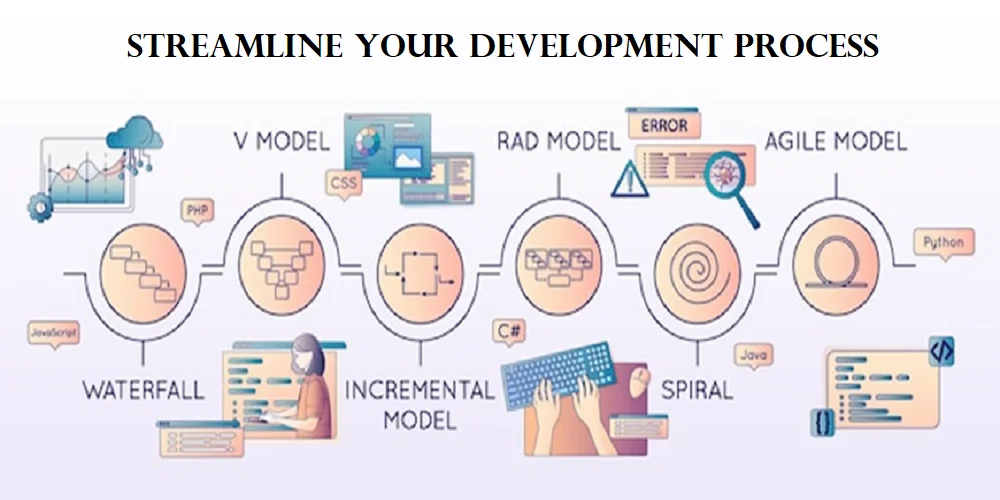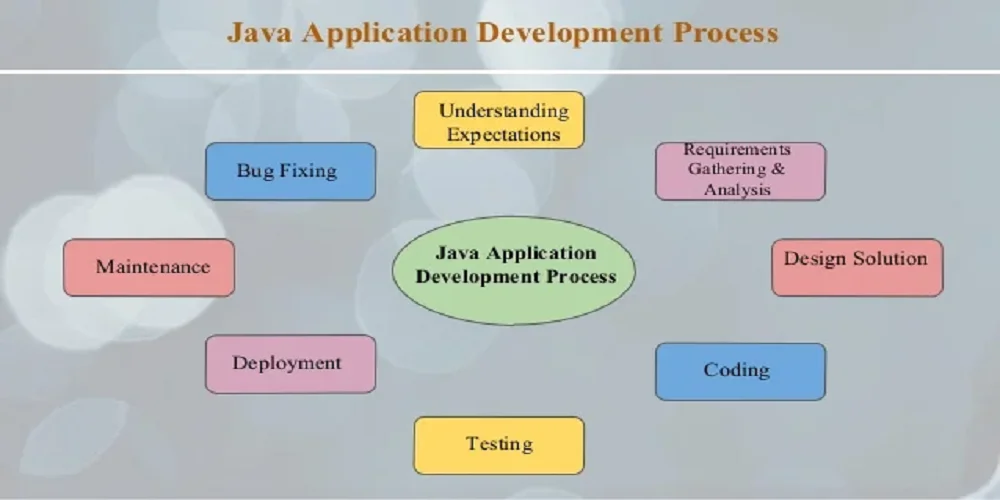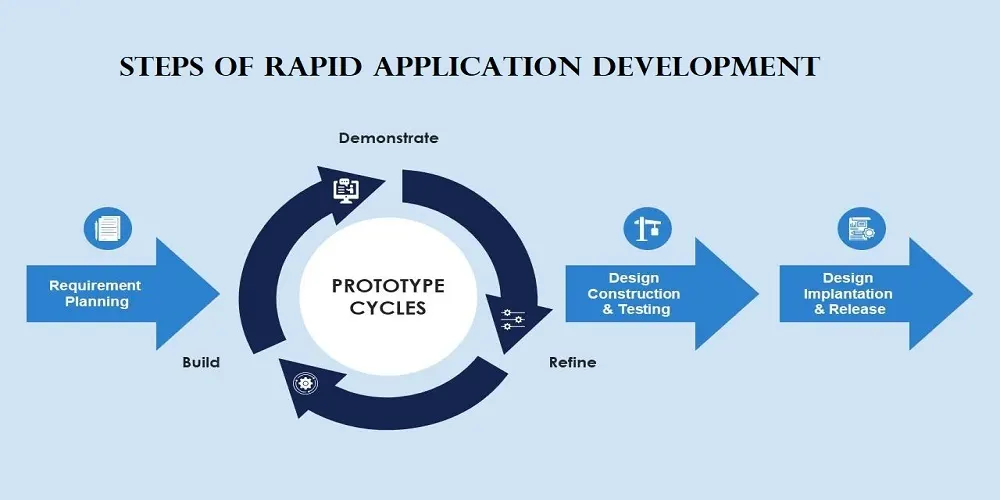
Java Rapid Application Development (RAD) is a software application development system that helps accelerate systems by focusing on rapid production and prototyping. It helps Java developers create robust and efficient packages in much less time compared to traditional software techniques.
What is Rapid Application Development (RAD)?
Rapid Application Development (RAD) is a development method that focuses on speed and adaptability. It involves an iterative improvement cycle, where developers work closely with customers to get essentials, create prototypes, and continuously improve software program tools based on input. RAD reduces time to market and enables rapid changes and upgrades during the improvement process.
Benefits of RAD
RAD (Rapid Application Development) is a common method for software development projects and has many advantages. However, these benefits also include changes in mission strategy for better production results. Therefore, understanding the benefits of RAD will help you understand where it can and cannot be used successfully in a rapid software improvement environment.
- RAD increases speed by reducing time to market, resulting in shorter development cycles and response times.
- It has enhanced collaboration that fosters closer interaction between developers, customers, and stakeholders to develop popular software.
- Regular note loops and iterations allow developers to note problems early in development, resulting in higher quality software, starting the improvement process early in RAD, and increasing satisfaction.
- Rapid application development replication power in terms of flexibility. This allows you to keep your programs up-to-date with the growing needs of your business.
- RAD simplifies modification, minimizes rework, and lowers costs through discounted capacity costs compared to modern software modification techniques.
Therefore, every custom software development company suggests you explore the benefits of RAD and understand where it can and cannot be used successfully in a rapid software improvement environment.
Risks of Rapid Application Development
Although RAD evaluation is expensive because it brings significant benefits to project development, a thorough evaluation must also consider its possible disadvantages. Understand the limitations and challenges of RAD to support specific application development decisions.
Reliance on Customer Participation
One of the challenges is that RAD requires the active participation of the customer during the development process, and the customer may not have enough time or expertise.
Scope Creep
Adding features will affect allocation schedules and budgets, and scope creep can occur in building RAD capabilities.
Higher Initial Investment
The assumption that RAD requires an initial investment in infrastructure, equipment, and training can be difficult for smaller groups or groups working with limited budgets.
Managing Complexity
Managing the complexity of large-scale initiatives can be difficult because RAD is fast-paced and requires careful planning and issue management.
Understanding Java Application Development Process

To realize better use of RAD for Java application development, the general development process should be known. The Java application development process typically comprises five steps: analysis, specification, design, implementation and integration, and testing. Developers then establish the functional and non-functional requirements of the system in close consultation with stakeholders at this phase. This involves identifying user needs, business requirements, and technical constraints.
With the requirements in hand, the design phase follows. This involves developing the application’s upper-level architectural aspect, such as the user interface, data models, and system components. The coding phase builds on the design decisions made during this phase. During this coding phase, developers perform the real programming of the application. Java development outsourcing can be particularly advantageous in this stage, as it allows businesses to leverage specialized expertise. Additionally, RAD frameworks and tools can significantly facilitate this process by offering ready-made components and libraries, leaving the developer to concentrate on business logic implementation and customization of these components according to their needs.
This code after being written must be properly tested to guarantee the quality and functionality of the application. Testing which involves both machine and human intervention in error and bug-catching. Testing is an iterative process and will only stop after the application meets all the required quality standards. Therefore, the application is now deployable. This comprises preparing the production application, making the server and database ready, and facilitating smooth transfer from development to operations. Deployments could also involve performance tuning and secure hardening.
5 Steps of Rapid Application Development

RAD simplifies the Java application development process through a sequential approach comprising five major steps. This structured approach not only improves the efficiency of the development cycle but also provides a clear framework for Java developers to navigate the complexities of building reliable and functional applications. Let's explore these five key steps that form the basis of RAD, understanding how they contribute to smooth and fast Java application development.
1. Requirements Gathering
In this initial phase, the developer collaborates with the client to understand their needs and determine the project requirements.
2. Prototyping
RAD emphasizes prototyping, which allows developers to quickly create a working model of an application to gather feedback and refine the design.
3. Development
Using feedback received during prototyping, developers continue full-scale development aimed at creating functional software that meets certain requirements.
4. Testing
Rigorous testing is essential in RAD to ensure software quality and reliability. This includes unit testing, integration testing, and user acceptance testing.
5. Deployment and Iteration
After the software is tested, it is deployed to the production environment. RAD encourages iteration and continuous development based on user feedback and developing business needs.
Java Rapid Application Tools
Several tools and frameworks can be adopted to tackle RAD for Java application development. These tools provide the developers with the requirements and capabilities of doing development in a better way so that the output required is achieved faster. Some popular Java RAD tools are:
Spring Roo
Spring Roo is a rapid application development tool for developing Java applications using the Spring framework. It also automates various mundane activities like code generation, database integration, and scaffolding which allow the developers to concentrate on their business logic.
Oracle Application Express
APEX—RAD Low-Code Java Application Development Platform. It is a web development infrastructure that includes prepared parts, which are useful in creating built-in applications.
JHipster
On the Development of Web Applications Using JHipster : A RAD Tool. It integrates with Java frameworks such as Spring Boot and AngularJS to make it easy for developers when build and scaling of web applications.
OutSystems
OutSystems full-stack RAD platform for Java application. This offers an intuitive interface, visual development tools, and pre-built components to allow you to develop enterprise-class applications with little coding. Developers can therefore be sure of delivering quality applications based on such RAD tools, which saves a lot of their time and thereby energy.
Choosing the Right Java RAD Framework for your Project
When it comes to choosing a good Java RAD framework for your project, there are several important things that you need to consider. These are some of the key determinants of the success and efficiency in your development process. By carefully evaluating the following aspects, you can make an informed choice that seamlessly aligns with your project's unique needs and objectives:
1. Project Requirements
Determine the precise needs of your project, such as expansion and integration demands.
2. Developer Skills
Take into account the skills and experience of your development team. Select a framework consistent with their area of specialization.
3. Community Support
Get a framework with an active community, regular updates, and good documentation.
4. Integration Capabilities
However, make sure the framework can be well integrated with other tools and technologies that have already been used in your project.
Java RAD vs Traditional Software Development: A Comparison
| Aspect | Java RAD | Traditional Development |
| Development Speed | Faster | Slower |
| Flexibility | Highly flexible | Less flexible |
| Iterative Approach | Iterative prototyping | Linear development |
| User Involvement | Close collaboration | Limited involvement |
| Learning Curve | Moderate | Steeper curve |
| Scalability | Ideal for small to medium | Suitable for all sizes |
| Cost-effectiveness | Cost-effective in the long run | Higher initial investment |
| Maintenance | Easier to maintain | May require complex updates |
Rapid Java RAD for Web Application Development
Java RAD frameworks for web application development are such as Spring Boot, Vadin, and Oracle Apex. The framework consists of visual tools, out-of-the-box components, and deep security for easy building robust & secure web applications. It is also highly compatible with the popular web technologies, databases, and deployment tools of the Java RAD framework which makes it easy to development process.
RAD in Java for Mobile Application Development
There is also a framework called Java RAD for mobile application development. Frameworks such as JHipster that couple Java with Angular help developers to have cross-platform mobile apps built smoothly. Java RAD framework has built-in features to develop mobile applications such as responsive UI components, links to different devices, and connection with mobile APIs.
Conclusion
Java Rapid Application Development (RAD), on the other hand, allows to development of applications quickly-moving. RAD allows you to develop quickly and also helps in faster delivery of your development. That is how you will create your web or mobile applications quickly and qualitatively using the Java RAD framework. Think over your project’s peculiarities, and choose the Java RAD framework that will allow you to implement faster.



